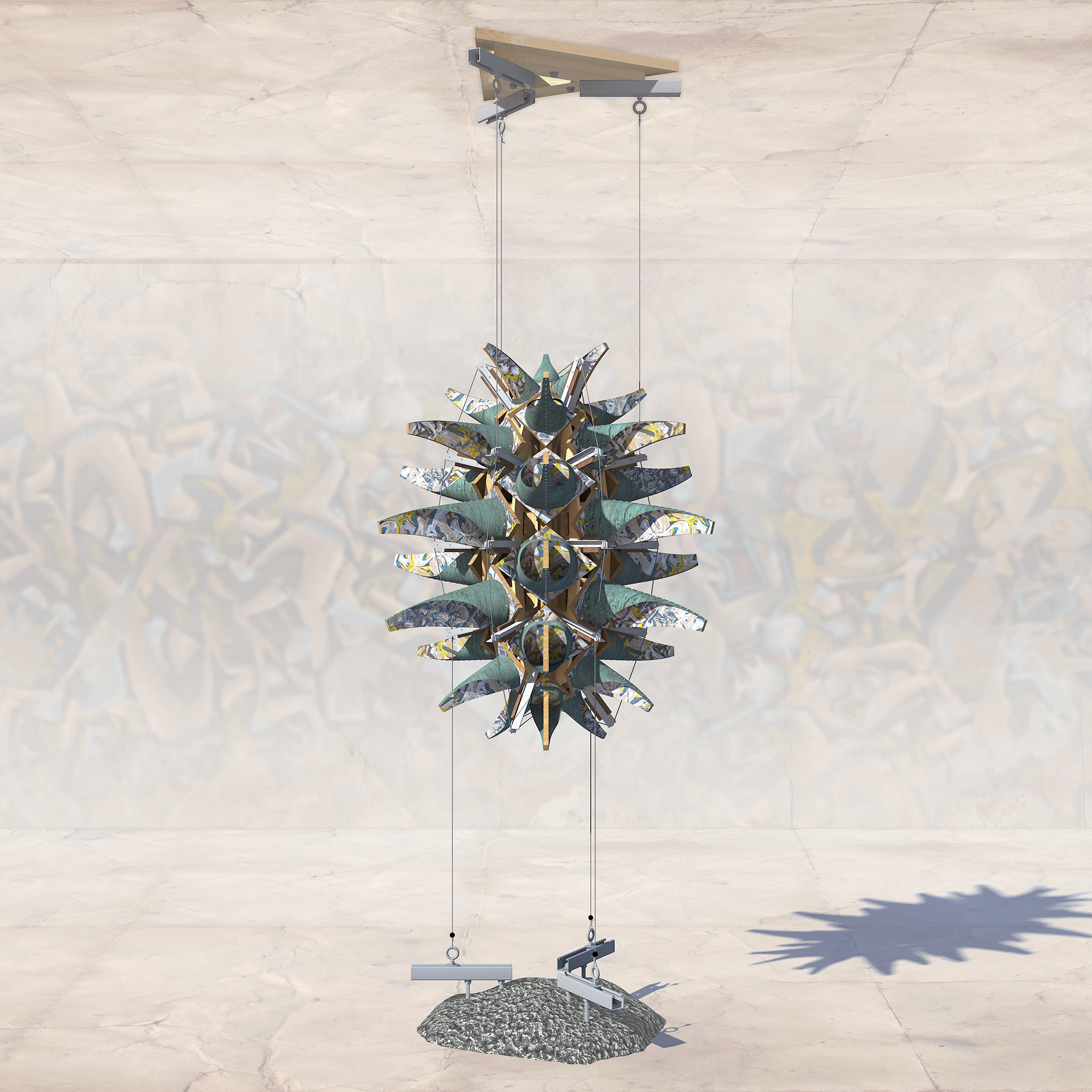
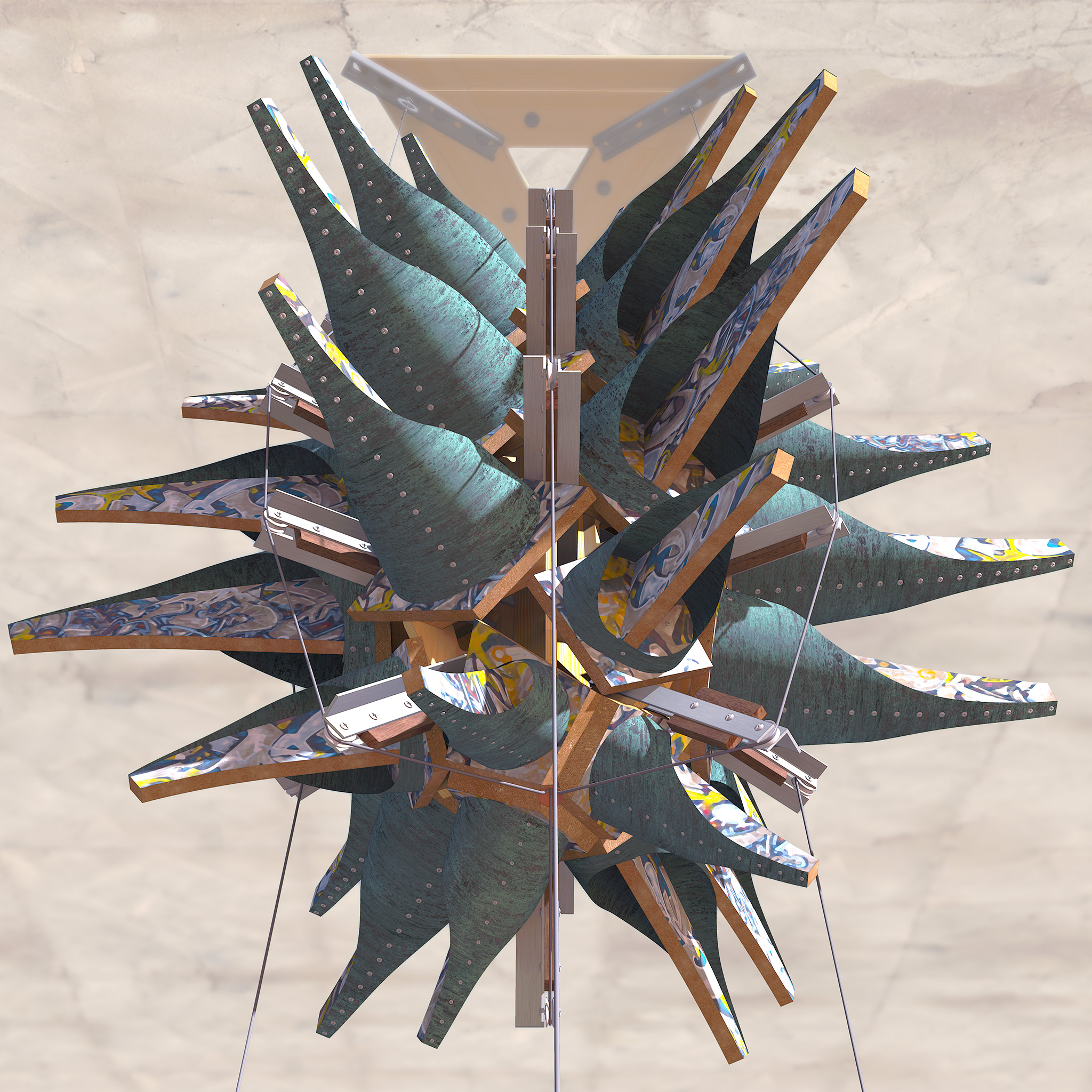
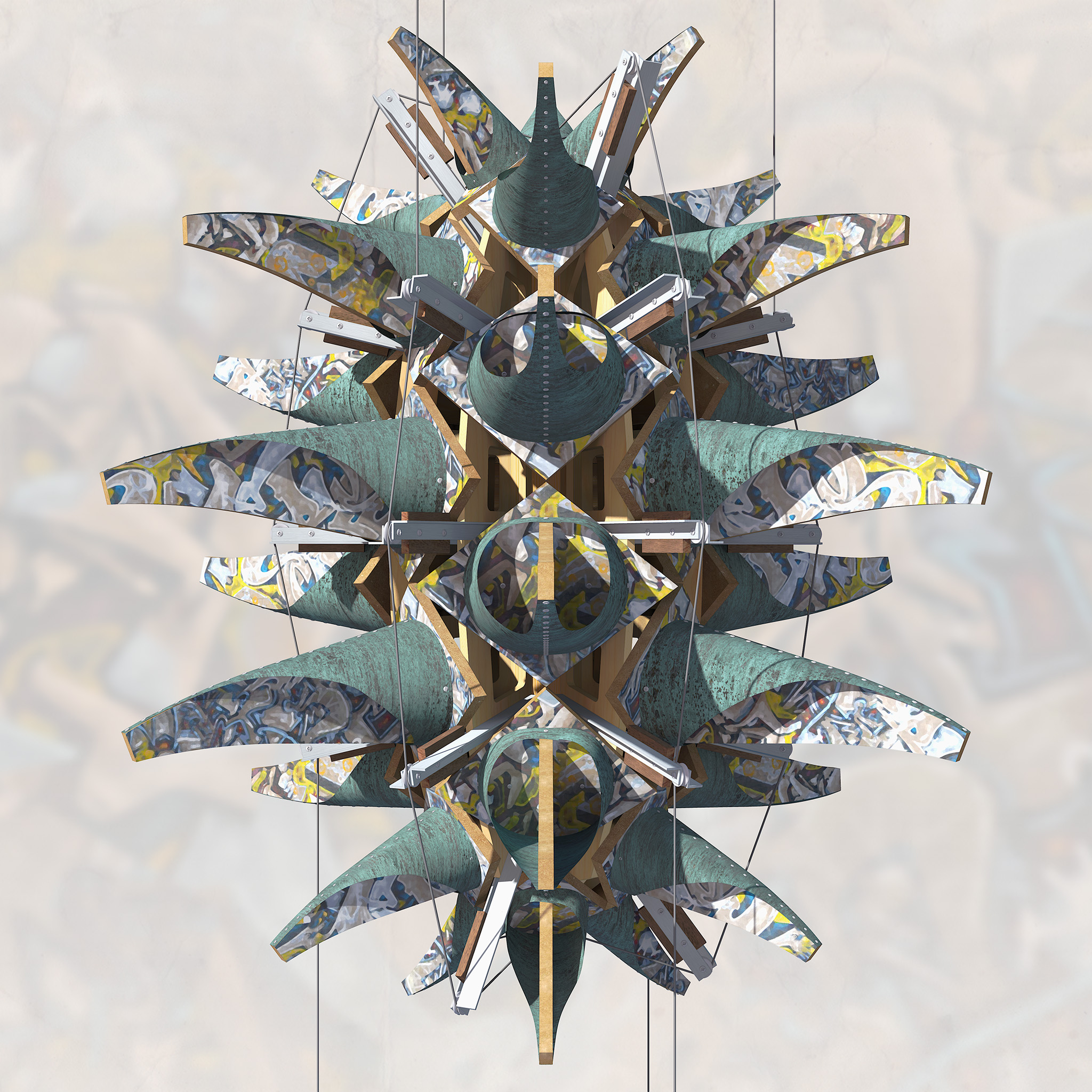
As with my architectural endeavors, so with my sculptural ones. I am better at coming up with a design than following through to realization of it, no matter how detailed it might be.
Despite having designed and even created parts lists for the semi-kinetic suspended Rigsum Gonpo (2018) sculptural project, I made no progress in even beginning the mammoth task of creating this thing. I found myself increasingly concerned with the level of precision (and resulting expense) required for the 3D-prints and (even more critically) for the carpentry for the supporting “skeleton”. It became obvious I might need to have the pieces cut by some sort of computer-controlled system, like a 5-axis CNC router; I certainly wasn’t going to be able to do this myself with my basement of random power tools from Home Depot, not without turning a lot of lumber into sawdust inadvertently and potentially losing some fingers. I didn’t (and don’t) have access to any CNC tools, or for that matter to a reliable, fast 3D printer, so a project that depended on these expensive devices was pretty much right out.
With this issue in mind I attempted in late 2021 to come up with an iteration of the sculptural piece that didn’t require expensive digital tooling. The gallery below illustrates the basic results of a KSP (“kites & spikes”) procedural form generation, limited to what I could cut and assemble from non-exotic materials using non-exotic tools; the gallery above displays the fully fleshed-out version. Of course, it still looks wildly exotic once I had “decorated” the various kite-forms — that seems to be a consequence of the geometric procedure that allowed me to generate them.
I’m still not convinced this sculptural piece is realizable as designed, and other tasks and projects have interfered with further development. Furthermore, is the basic underlying idea with RG2 the same as that of its predecessor? I seem to have lost the odd thread of Himalayan mythology that inspired the earlier effort. Now it just looks alien.
Which is fine, but perhaps it needs a different title.
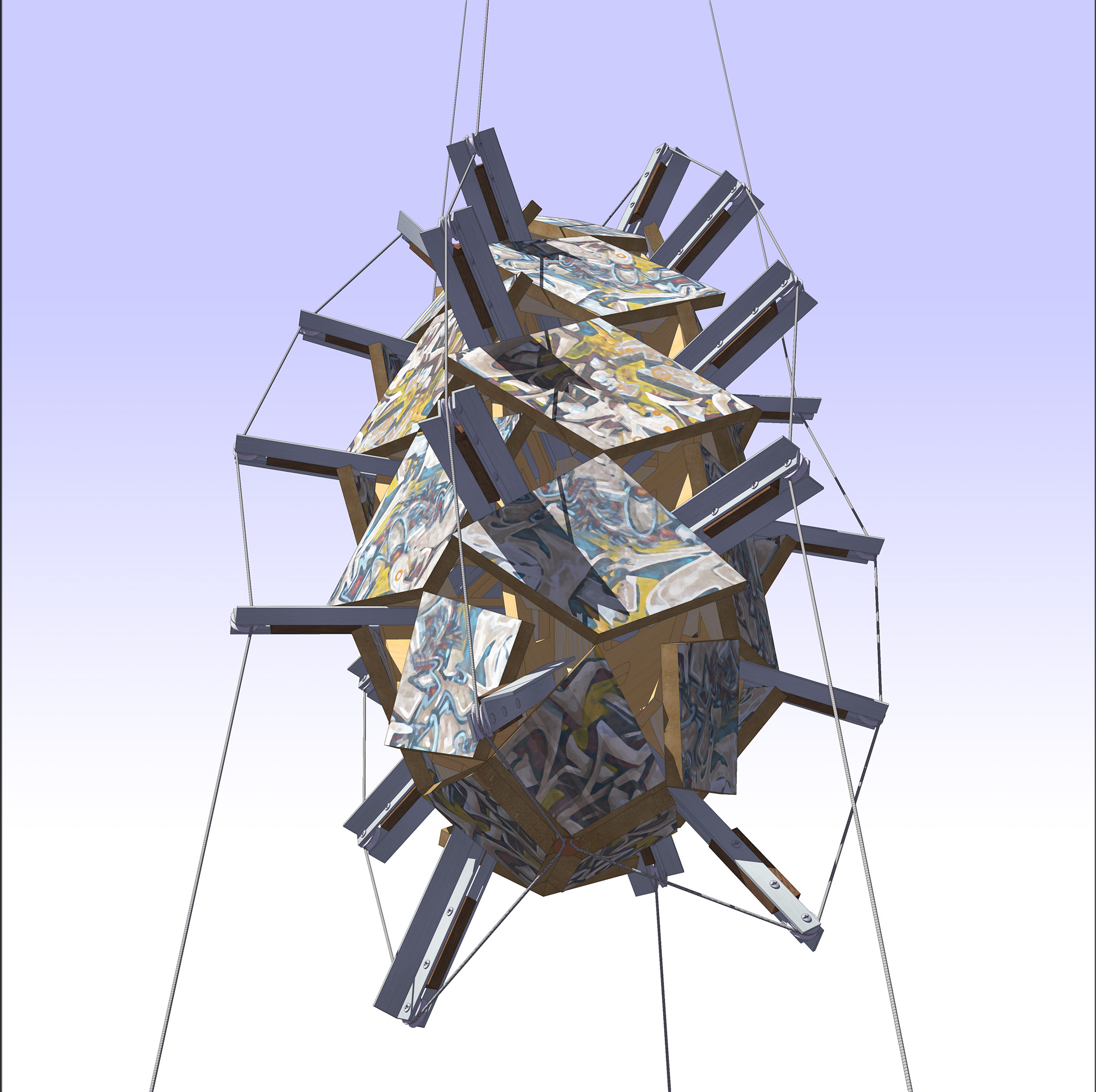
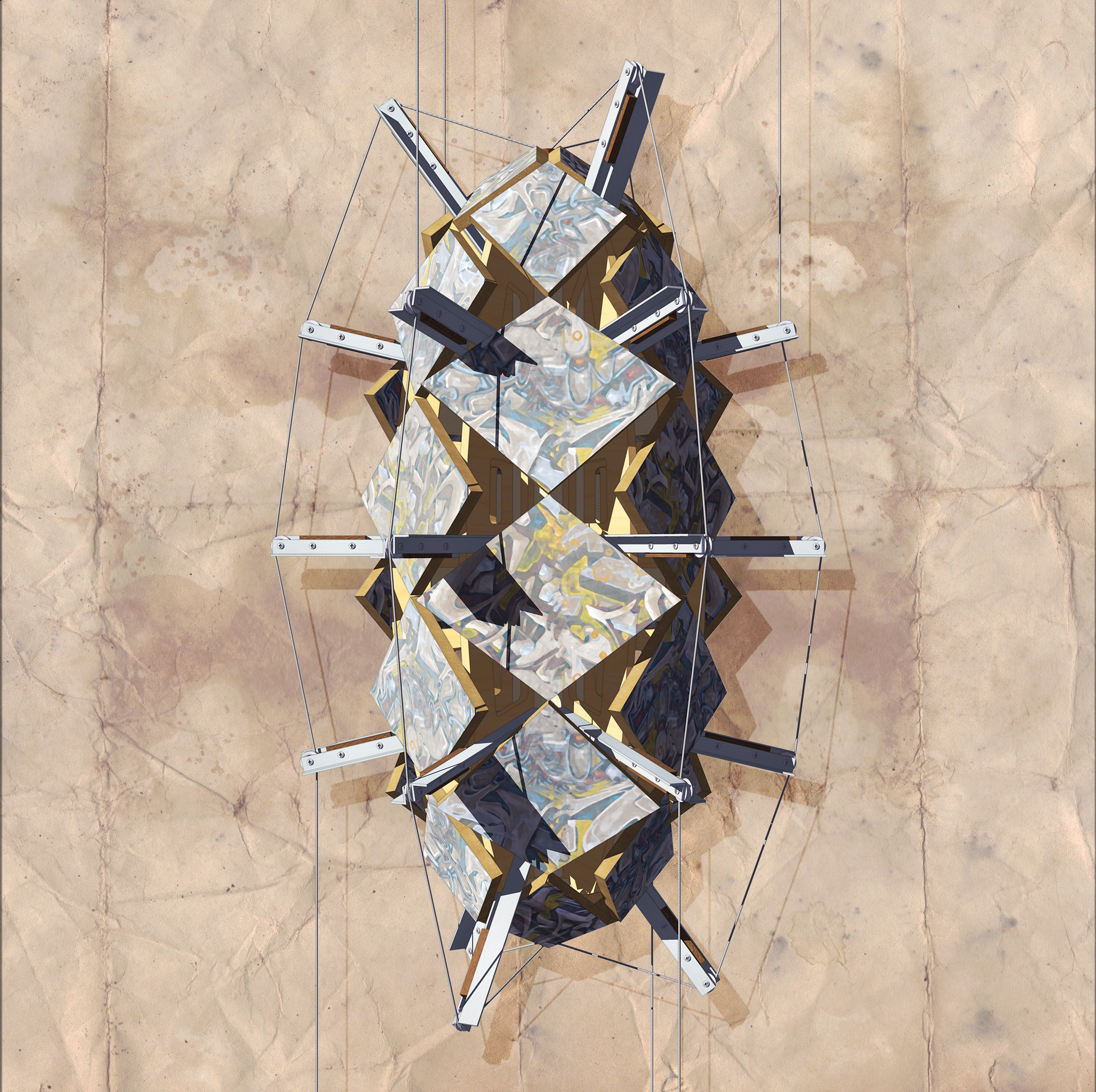
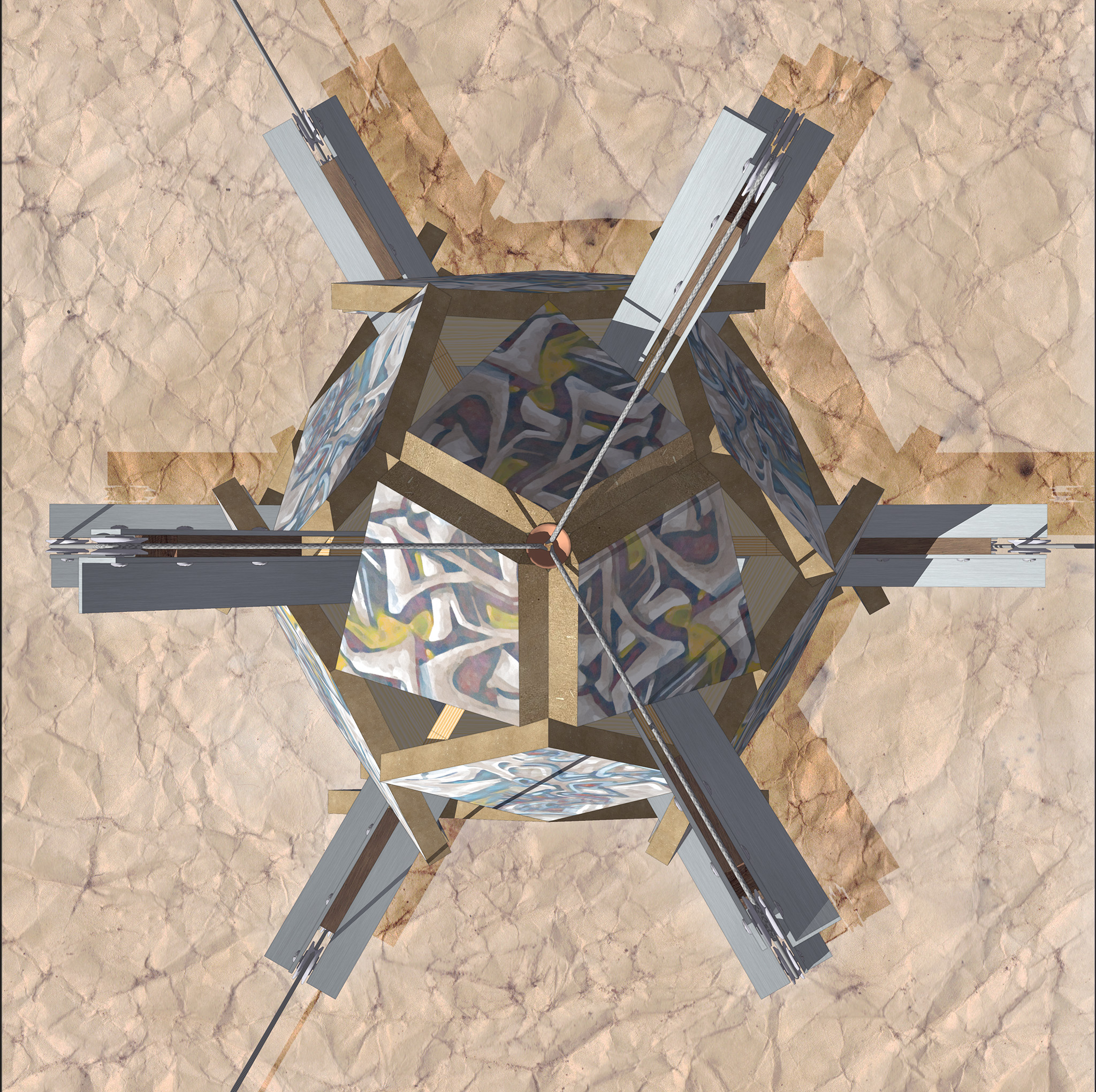
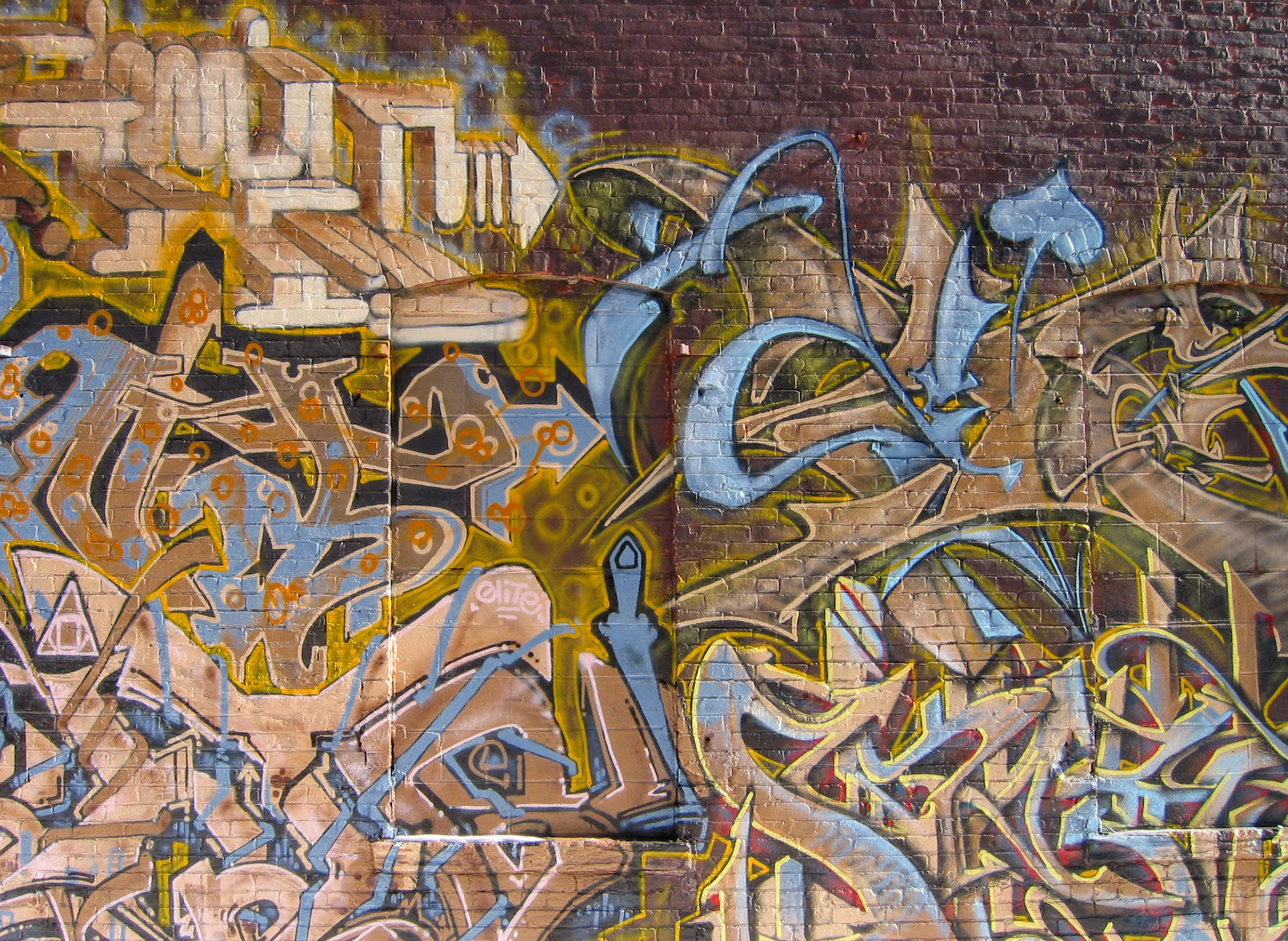

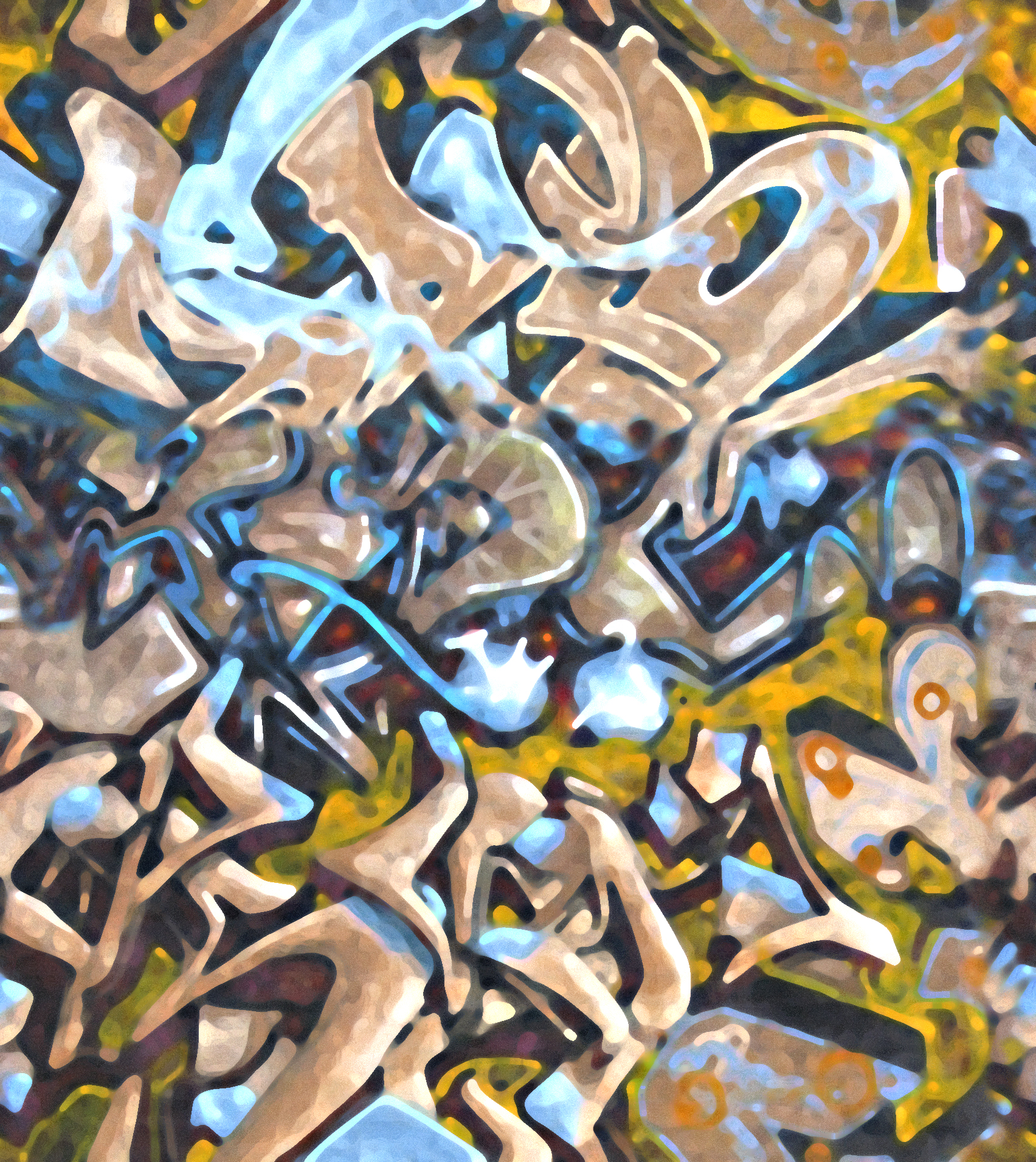
Incidentally, for this piece I developed a kind of tessellating graphic pattern for decorating the wooden planar surfaces. With the first Rigsum Gonpo design I referenced the splashes of three colors that symbolize the Three Protectors of Vajrayana Buddhism; here I tried to come up with a different guardian color scheme. The pattern is derived from certain photos I took in Greenpoint, Brooklyn in early 2004 of graffiti-encrusted walls along West and Commercial Streets — locations that might as well have existed in an alternative universe as far as I can tell. I certainly can’t seem to locate the areas where I took these photos now. Gentrification dropped like a bomb on that part of Brooklyn. I suppose in the end the graffiti artists’ paint did not claim, protect, or preserve the world they colored.
Yeah, I really am conflating NYC street graffiti with primitive mountain Buddhist iconography. Sorry, that’s probably too much of a cognitive leap for most people.
The “Greenpoint-graffiti wallpaper” pattern would also make an appearance in my oneiric and speculative architectural project, the Paradis House (2022-2023).
Leave a Reply